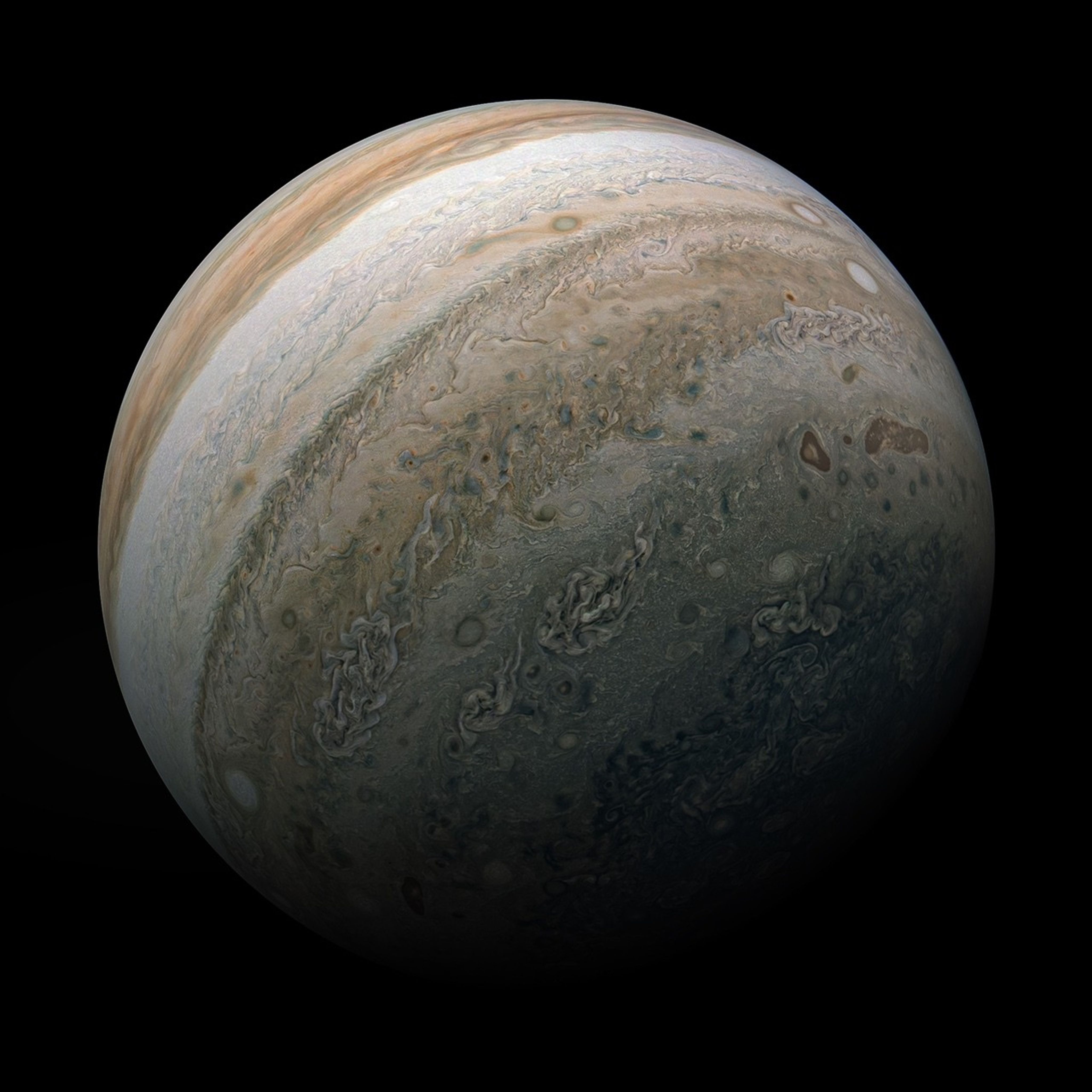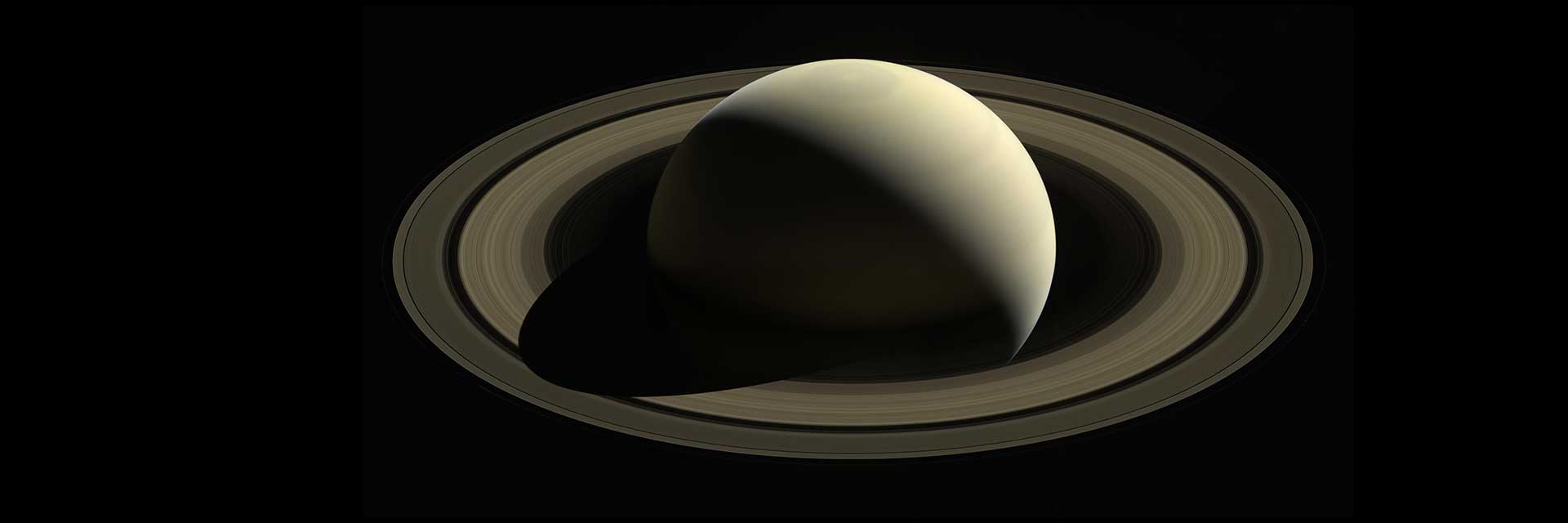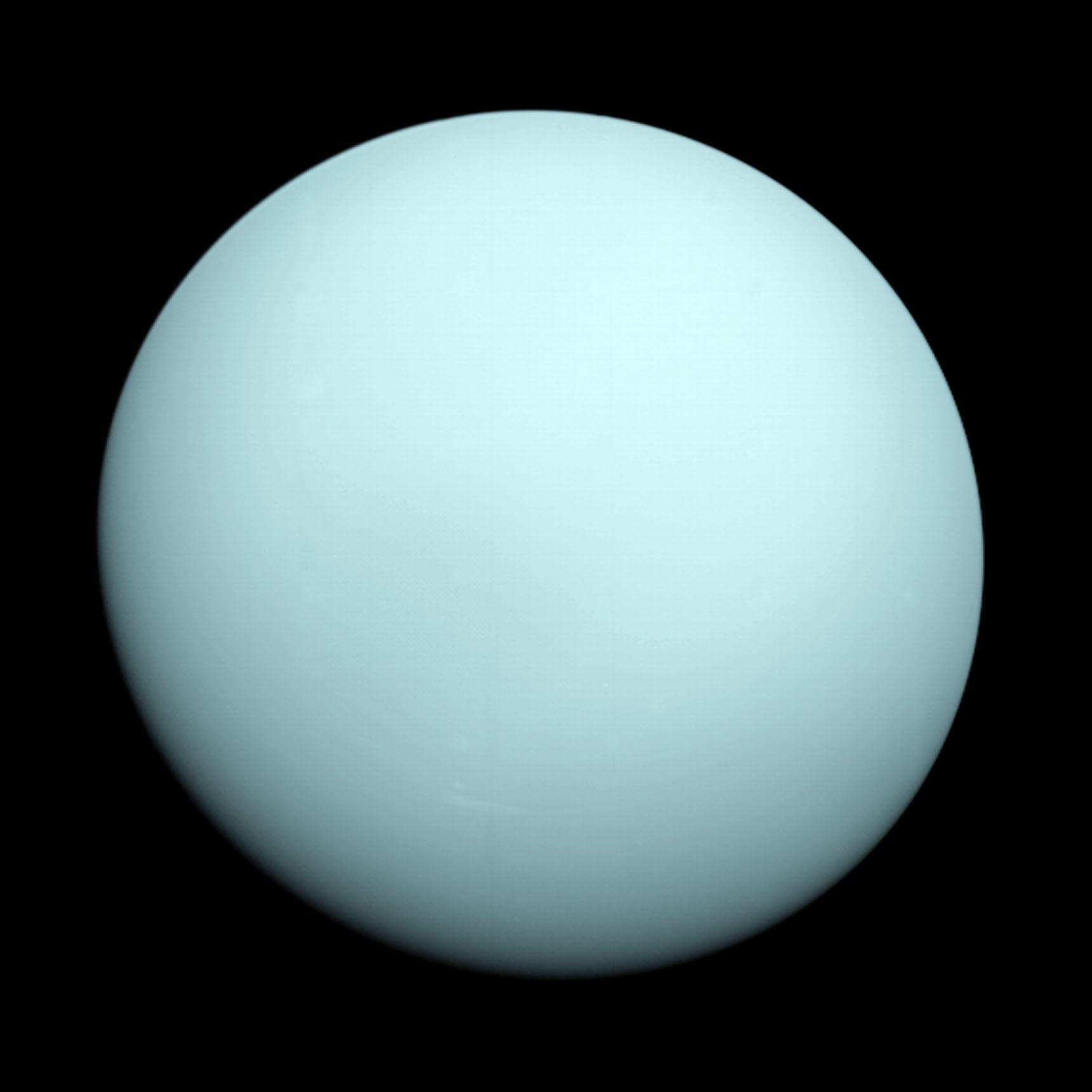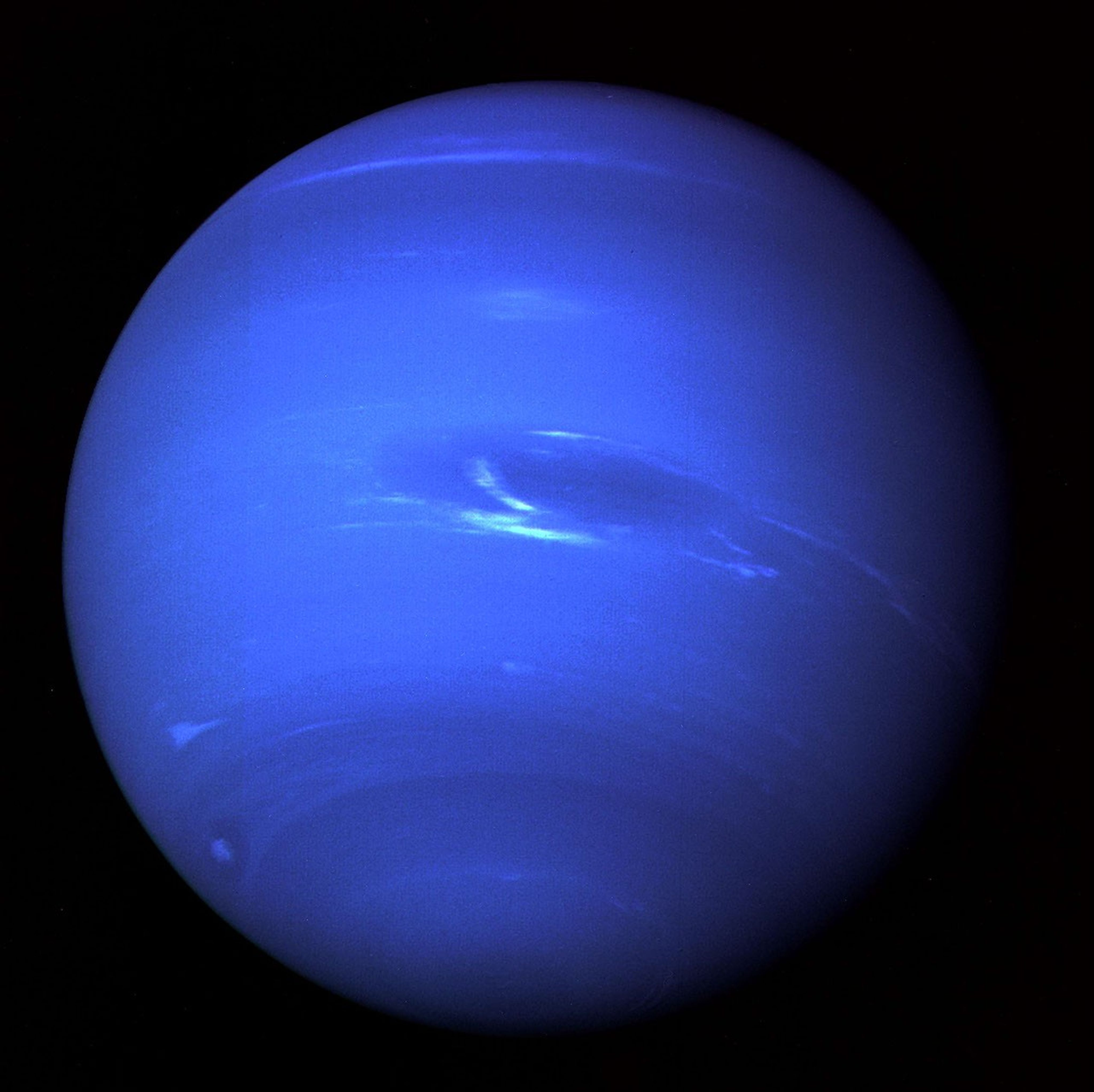Voyager 1 and Voyager 2
Science
After completing the first in-depth reconnaissance of the outer planets, the twin Voyagers are on a new mission to chart the edge of interstellar space.
Science Investigations
- 01
Interstellar Science
Five investigation teams are participating in the Voyager interstellar mission.
- 02
Interstellar Mission
The objective is to extend exploration to the outer limits of the Sun's sphere of influence.
- 03
Planetary Voyage
The primary mission was the exploration of the outer planets beyond the asteroid belt.
- 04
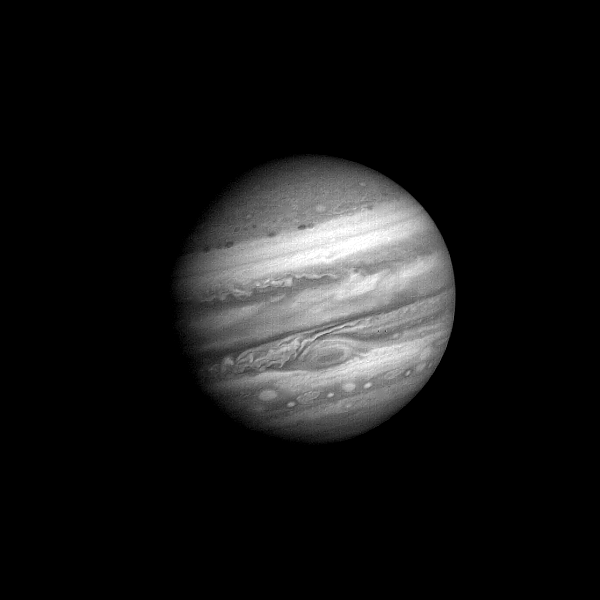
Timeline
Voyager's 30-Year Plan
Voyager Interstellar Mission (VIM) is an extension of the Voyager primary mission that was completed in 1989 with the close flyby of Neptune by the Voyager 2 spacecraft. Voyager 1 completed its planned close flybys of the Jupiter and Saturn planetary systems while Voyager 2, in addition to its own close flybys of Jupiter and Saturn, completed close flybys of the remaining two gas giants, Uranus and Neptune. The mission objective of the VIM is to obtain useful interplanetary, and possibly interstellar, fields, particles, and waves (FPW) science data until year 2020 and beyond when the spacecraft's ability to generate adequate electrical power for continued science instrument operation will come to an end.
Introduction
In order to capitalize on this lengthy data acquisition potential, it is imperative that the spacecraft have a continuing sequence of instructions for acquiring the desired science data, and that the spacecraft High Gain Antenna (HGA) boresight remain pointed at the Earth for continuous data transmission. Because of the long mission duration and the likelihood of periodic spacecraft anomalies, it is also advantageous to continue the use of the on-board fault protection capability for automated responses to specific subsystem anomalies, and to provide an on-board sequence to continue spacecraft operation in the specific event of the future loss of command reception capability. All of these factors are considered in the VIM operating plan. The following sections describe the overall spacecraft sequencing strategy used for VIM operations, the interaction of the sequence elements with the on-board Fault Protection Algorithms (FPAs), and the planned modifications to the spacecraft configuration in response to the continual reduction in electrical power availability throughout the remainder of the mission.
Sequencing Strategy
A spacecraft sequence is the set of instructions that are stored in an on-board computer memory and control the operation of the engineering subsystems and science instruments for the purpose of gathering and transmitting science data to the ground stations. Typically, a spacecraft sequence is designed to function for a specific period of time. Some of the key factors that determine the duration of a spacecraft sequence are:
- size of the on-board memory;
- characteristics of the science observations; a series of one of a kind type of observations, or a series of observations that are repetitive for an extended period of time;
- ability to store HGA pointing information on-board the spacecraft.
With the Voyager spacecraft being mid-1970's technology, the available on-board memory for storing spacecraft sequence information is very limited by today's standards. A total of about 1500 18-bit words are available between the two Computer Command Subsystem (CCS) memories for storing sequence instructions and HGA pointing information. This limited memory space can be a significant factor if the sequence is composed of a series of one of a kind activities. Fortunately, the science observations being made during VIM are very repetitive in nature. This allows a science observation or instrument calibration to be repeated (cyclicized), essentially for the duration of the mission, at practically the same memory word cost as a single observation or calibration. This implementation of events as a cyclic sequence that repeats an observation or calibration on a regular basis is key to the VIM sequencing strategy. Another key factor is the ability to store HGA pointing information out to the end of mission in the CCS memory. This not only simplifies the routine sequence generation support by not requiring HGA pointing information to be included in individual sequences transmitted to the spacecraft, but also enables the ability to provide science data even if command capability to the spacecraft is lost. These two sequence capabilities are referred to as the "baseline sequence."
Augmentation of the baseline sequence with non-repetitive science or engineering events use either an "overlay sequence," or a "mini-sequence." The difference between these two types of augmentation sequences is that the overlay sequence operates for a fixed interval of time, and contains all of the baseline sequence augmentations for that time interval. The mini-sequence is focused on accomplishing a single augmentation need and is not a regularly scheduled activity but is done on an as needed basis. Both types of sequences are developed and transmitted from the ground. It was envisioned that there would be one overlay sequence in every three months and it was practiced in early VIM. However, due to the difficulty in predicting and obtaining the DSN resources, an overlay load has been split into two sequences in recent years. Mini-sequences are infrequent and mainly used for anomaly investigation and resolution.
In addition, any one-time-event for the duration of the mission are implanted in long-term events table. One example is terminating the Digital Tape Recorder (DTR) utilization when the Plasma Wave science instrument (PWS) playbacks can no longer be supported. Another important function included in this table is resetting the hourly counter in the CCS about every 13.5 years so the spacecraft can continue to have sequencing capabilities.
The baseline sequence, overlay sequence, and mini-sequence, and long-term events table provide the basic operational sequence elements for normal operations while command capability with the spacecraft is available. In the event command capability is lost, another sequence element, the "Backup Mission Load (BML)," provides the mechanism for continued spacecraft data acquisition without further ground interaction. A BML is stored on-board each spacecraft and contains the necessary instructions to modify the on-going baseline sequence to maintain the continued return of basic FPW data. The BML also terminates the use of the gyros and Digital Tape Recorder (DTR) utilization when the available electrical power will no longer support their operations. Another important function included in BML is resetting the hourly counter in the CCS about every 13.5 years so the spacecraft can continue to have the sequencing capabilities.
Sequence Interaction with On-Board Fault Protection
The FPAs on the Voyager spacecraft are designed to recover the spacecraft from specific potential mission-catastrophic failures. They are implemented primarily in the CCS, while some are in the Attitude and Articulation Control Subsystem (AACS). The FPAs in the CCS are invoked by interrupts received from external sources, and followed by preprogrammed responses.
The five FPAs that currently reside in the CCS are:
- AACS Power Code Processing (AACSIN) — responds to AACS anomalies by processing Power Codes (PCs) received from the AACS.
- Command Loss (CMDLOS) — provides a means for the spacecraft to automatically respond to an on-board failure resulting in the inability to receive ground commands.
- Radio Frequency Power Loss (RFLOSS) — provides the spacecraft a means of automatically recovering from a failure of an S-band or X-band exciter or transmitter.
- CCS Error (ERROR) — provides the capability to respond to certain anomalous CCS hardware and software conditions.
- Power Check (PWRCHK) — provides a means for the spacecraft to automatically configure itself to a safe, low-power operating mode following a power subsystem undervoltage condition or a CCS tolerance detector trip.
If an AACSIN, CMDLOS, or RFLOSS entry occurs, the response will be integrated into on-going sequence and the commands from an FPA response and the regular sequencing activities will be interleaved. For an ERROR or PWRCHK entry, all the on-going activities will be terminated. However, some of the critical activities including the baseline sequence will be automatically restarted by a special feature called "rollback" although there will be some data loss depending on when a PWRCHK or ERROR entry occurs.
Modifications In Response to Electrical Power Limitations
Radioisotope thermoelectric generators (RTGs) provide electrical power to the Voyager spacecraft. Due to the natural radioactive decay of the plutonium oxide heat source, the electrical power provided by the RTGs is continually declining, as expected. The current rate of decay is approximately 4 watts per year. Because of the continual decline in the amount of power that is available, it is necessary to periodically reduce power consumption in order to maintain an adequate power margin. This is accomplished by turning off spacecraft power loads.
VOYAGER 1
The following lists those loads that have been turned off in VIM and the year:
- 1990 — IRIS Flash-off Heater OFF (+31.8 W)
- 1990 — WA Camera OFF (+16.8 W)
- 1990 — NA Camera OFF (+18.0 W)
- 1995 — PPS Supplemental Heater OFF (+2.8 W)
- 1995 — NA Optics Heater OFF (+2.6 W)
- 1995 — IRIS Standby A Supply OFF (+7.2 W)
- 1998 — WA Vidicon Heater OFF (+5.5 W)
- 1998 — NA Vidicon Heater OFF (+5.5 W)
- 1998 — IRIS Science Instrument OFF (+6.6 W)
- 2002 — WA Electronics Replacement Heater OFF (+10.5 W)
- 2003 — Azimuth Actuator Supplemental Heater OFF (+3.5 W)
- 2003 — Azimuth Coil Heater OFF (+4.4 W)
- 2003 — Scan Platform Slewing Power OFF (+2.4 W)
- 2005 — NA Electronics Replacement Heater OFF (+10.5 W)
- 2007 — Pyro Instrumentation Power OFF (+2.4 W)
- 2007 — PLS Science Instrument OFF (+4.2 W)
- 2007 — PLS Replacement Heater OFF (+4.3 W)
- 2008 — PRA Science Instrument OFF (+6.6W)
- 2011 — IRIS Replacement Heater OFF (+7.8 W)
- 2014 — Scan Platform Supplemental Heater OFF (+6.0W)
- 2015 — UVS Replacement Heater OFF (+2.4W)
- 2016 — UVS Science Instrument OFF (+2.4 W)
The following lists those loads that are planned to be turned off:
- Termination of DTR operations (+3.6 W; the DTR will remain on to prevent hydrazine lines from freezing). This power load reduction will not occur as long as the PWS Playbacks are continued (the date for discontinuing playbacks will be determined by the thermal and telecom margins).
- Discontinue gyro use for nominal operation (+14.4 W steady state, +3.6 W turn on transient and maneuver). A new software function has been added to temporarily power off the Bay 1 heater to provide the power needed for gyro use until this is thermally unsafe to do. The gyros will be used only for fault protection recovery afterward.
Further responses to decreasing electrical power, beginning after 2020, will consist of either turning instruments off sequentially or turning instruments off and on in a power sharing mode to maintain an adequate power margin.
VOYAGER 2
The following lists those loads that have been turned off in VIM and the year:
- 1991 — PPS Science Instrument (+1.2 W) - 1991
- 1994 — NA Optics Heater OFF (+2.6 W) - 1994
- 1996 — WA Vidicon Heater OFF (+5.5 W) - 1996
- 1996 — NA Vidicon Heater OFF (+5.5 W) - 1996
- 1998 — The following Scan Platform loads (43.9 W) were turned off and the UVS mission was terminated
- WA Electronics Replacement Heater OFF (+10.5 W)
- IRIS Replacement Heater OFF (+7.8 W)
- NA Electronics Replacement Heater OFF (+10.5 W)
- Azimuth Actuator Supplemental Heater OFF (+3.5 W)
- UVS Science Instrument OFF (+2.4 W)
- UVS Replacement Heater OFF (+2.4 W)
- Azimuth Coil Heater OFF (+4.4 W)
- Scan Platform Slewing Power OFF (+2.4 W)
- 2006 — Pyro Instrumentation OFF (+2.4 W)
- 2006 — TCM Chamber Press Transducers OFF (+1.9W)
- 2007 — IRIS Science Instrument OFF (+6.6 W)
- 2007 — Termination of DTR operations (+3.6 W; DTR remains on to prevent hydrazine lines from freezing)
- 2008 — PRA Science Instrument (+6.6W)
- 2011 — AP Branch 2 Backup Heater OFF (+11.8 W)
The following lists those loads that are planned to be turned off:
- Discontinue gyro use for nominal operation (+14.4 W steady state, +3.6 W turn on transient and maneuver). A new software function has been added to temporarily power off the Bay 1 heater to provide the power needed for gyro use until this is thermally unsafe to do. The gyros will be used only for fault protection recovery afterward.
Further responses to decreasing electrical power, beginning after 2020, will consist of either turning instruments off sequentially or turning instruments off and on in a power sharing mode to maintain an adequate power margin.
Publication Bibliography
Science Data Access
Voyager science data are available on-line at the National Space Science Data Center (NSSDC) and at the investigators' institutions.
Summary of Voyager Data Available at the Virtual Space Physics Observatory
Voyager Project Information and Science Data at NSSDC
Voyager Data at OMNIWeb Plus
Voyager Data at Virtual Energetic Particle Observatory
Voyager Data at NSSDC Anonymous ftp site
Magnetic Fields at GSFC
Low-energy Charged Particles at APL
At Fundamental Technologies
At Univ of Maryland
Plasma Science at MIT
Cosmic Ray Subsystem at GSFC(including latest Voyager 1 data from the heliopause)
Trajectory Data at MIT
Heliospheric Trajectories at HelioWeb
Science News Archives
Glossary of Abbreviations
Abbreviations for Scientific Journals used in the Voyager Bibliography.
Introduction
This bibliography lists scientific articles and papers coauthored by the Principal Investigators, Coinvestigators, and their associates of the eleven Voyager science investigations. They report analysis and research based on data from six planetary encounters, the intervening cruise periods, and the post-Neptune interstellar cruise. The bibliography covers publications from 1977 through the present. Annual updates will be issued as addendums to this bibliography
This listing organizes articles and papers by investigation, as shown in the table of contents, then by year of publication, and, alphabetically by author. It also identifies some (but by no means all) of the collaborative efforts of scientists from different investigations. Generally, the multiauthor articles appear according to the first author's affiliation.
ABBREVIATIONS | SCIENTIFIC JOURNALS USED |
Adv. Space Res. | Advances in Space Research |
Adv. Astronaut. Sci. | Advances in the Astronautical Sciences |
AIAA Journal | American Institute of Aeronautics and Astronautics Journal |
Annales Geophysicae | Annales Geophysicae |
Annu. Rev. Astron. Astrophys. | Annual Review of Astronomy and Astrophysics |
Annu. Rev. Earth Planet. Sci. | Annual Review of Earth and Planetary Sciences |
APL Tech. Dig. | APL (Applied Physics Laboratory) Technical Digest |
Appl. Optics | Applied Optics |
Astronom. and Astrophys. | Astronomy and Astrophysics |
Astronom. J. | Astronomical Journal |
Astrophys. J. | Astrophysical Journal |
Astrophys. J. Lett. | Astrophysical Journal. Letters to the Editor |
Astrophys. & Space Sci. | Astrophysics and Space Science |
Can. J. Phys. | Canadian Journal of Physics |
Celest. Mech. | Celestial Mechanics |
Endeavour | Endeavour |
Eng. and Sci. | Engineering and Science |
EOS | EOS (Transactions, American Geophysical Union) |
ESA Bull. | ESA (European Space Agency) Bulletin |
Fut. Life | Future Life |
Geophys. Res. Lett. | Geophysical Research Letters |
IAU | International Astronomical Union |
Int. Rev. Phys. Chem. | International Reviews in Physical Chemistry |
Int. J. Supercomp. Appl. | International Journal of Supercomputer Applications |
J. Atmos. Sci. | Journal of the Atmospheric Sciences |
J. B. I. S. | Journal, British Interplanetary Society |
J. Br. Astron. Assoc. | Journal. British Astronomical Association |
J. Geophys. Res. | Journal of Geophysical Research |
J. Mol. Evol. | Journal of Molecular Evolution |
J. Phys. Chem. | Journal of Physical Chemistry |
Mon. Not. Roy. Astron. Soc. | Monthly Notices. Royal Astronomical Society |
Nat. Hist. | Natural History |
Nucl. Instrum. Methods | Nuclear Instruments and Methods |
Nucl. Instrum. Methods. Phys. Res. | (later Nuclear Instruments and Methods in Physics Research) |
Origins Life | Origins Life |
Phil. Trans. Roy. Soc. London | Philosophical Transactions. Royal Society of London |
Photogram. Eng. Remote Sensing | Photogrammetric Engineering and Remote Sensing |
Phys. Can. | Physics in Canada |
Phys. Lett. | Physics Letters |
Phys. Lett. A | Physics Letters. A |
Phys. Lett. B | Physics Letters. B |
Phys. Lett. C | Physics Letters. C |
Phys. Rev. Lett. | Physical Review. Letters |
Phys. Rev. A | Physical Review. Section A |
Phys. Teach. | Physics Teacher |
Phys. Today | Physics Today |
Planet. Space Sci. | Planetary and Space Science |
Proc. Roy. Soc. London | Proceedings of the Royal Society of London |
Radio Sci. | Radio Science |
Rev. Geophys. and Space Phys. | Reviews of Geophysics and Space Physics |
Rev. Sci. Instr. | Review of Scientific Instruments |
Royal Astron. Soc. Quart. Jour. | Royal Astronomical Society Quarterly Journal |
Sci. Vie | Science et Vie |
Sci. Am. | Scientific American |
Sky & Tel. | Sky and Telescope |
Solar Phys. | Solar Physics |
Solar Sys. Res. | Solar System Research |
SPI | Science Publishers, Inc. |
Space Sci. Rev. | Space Science Reviews |
Trans. Am. Nucl. Soc. | Transactions. American Nuclear Society |
UAG | USSR. Academy of Science. Proceedings. Geographical Series |
USGS | U.S. Geological Survey |
Vistas Astron. | Vistas in Astronomy |

